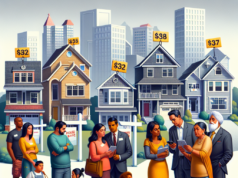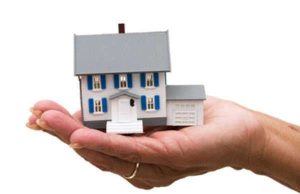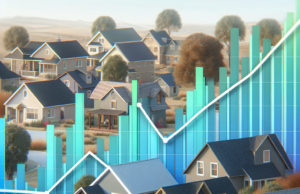
Home Refinance: A Comprehensive Guide
Refinancing a home can be a daunting experience, but it doesn’t have to be. The decision to refinance can be influenced by various factors like current interest rates, length of time in your home, or the need for funds. In this article, we will explore everything you need to know about home refinance, including updated information using government resources.
What is Home Refinance?
Home refinance is a process of obtaining a new mortgage to replace your existing one. Homeowners choose to refinance for different reasons, like getting a lower interest rate, shortening or extending the loan term, or accessing cash for home improvements or debt consolidation.
Types of Home Refinance
Homeowners can choose from a range of refinancing options, depending on their goals and qualifications. Here are the most common types of home refinance:
Rate-and-term Refinance: This type of refinance replaces the original mortgage with a new one with a lower interest rate, a shorter or longer term, or both. Rate-and-term refinance is ideal for homeowners who want to reduce their monthly payments, lower their lifetime interest payments, or pay off the mortgage faster.
Cash-out Refinance: Cash-out refinance replaces the existing mortgage with a new one that is greater than the remaining balance. The difference between the new and old mortgage is given to the homeowner as cash, which can be used for any purpose. Cash-out refinancing is suitable for homeowners who want to access equity in their home, pay off high-interest debts, or make significant home improvements.
FHA Streamline Refinance: This type of refinance is available only to homeowners with an existing FHA mortgage. FHA streamline refinance lets borrowers refinance with reduced documentation and minimum credit requirements. The purpose of FHA streamline refinance is to lower the monthly payments and expedite the refinance process.
VA Streamline Refinance: Similar to FHA streamline refinance, VA streamline refinance is offered only to veterans and service members with an existing VA mortgage. The VA streamline refinance program aims to lower the monthly payments by reducing the documentation and appraisal requirements.
USDA Streamline Refinance: USDA streamline refinance is offered to homeowners with an existing USDA loan. The purpose of USDA streamline refinance is to lower the monthly payments by eliminating the need for a home appraisal, income verification, or credit check.
Costs of Home Refinance
Refinancing a home is not free, and homeowners should be aware of the costs associated with refinancing. Here are some of the costs involved in home refinance:
Closing Costs: Closing costs are fees charged by lenders or third-party services for processing the mortgage application and finalizing the refinance. Closing costs can vary but typically range between 2-5% of the loan amount.
Appraisal Fees: Appraisal fees are charges for determining the current market value of the property. In some cases, homeowners may not need to get a new appraisal, especially if they are doing a streamline refinance.
Credit Report Fees: Lenders may charge a fee for obtaining a credit report, which is used to determine the borrower’s creditworthiness and interest rate.
Title Search and Insurance Fees: Title search and insurance cover the cost of investigating the property’s ownership history, ensuring there is no outstanding lien or claim on the property.
Prepayment Penalties: Some lenders could enforce a prepayment penalty for paying off the mortgage early. A prepayment penalty is a fee charged for paying off the mortgage before the agreed-upon term.
Government Resources on Home Refinance
The federal government provides several resources for homeowners looking to refinance their mortgage. Here are some of the most useful resources:
Fannie Mae and Freddie Mac: Fannie Mae and Freddie Mac are government-sponsored enterprises that buy and sell mortgages on the secondary mortgage market. Homeowners can use their online tools to find out if their mortgage is backed by Fannie Mae or Freddie Mac. If so, they may be eligible for high-LTV refinancing options or affordable mortgage programs.
Consumer Financial Protection Bureau (CFPB): CFPB is a government agency that provides information and resources to help consumers make informed financial decisions. CFPB’s website has a mortgage refinance guide that outlines the steps involved in refinancing a mortgage, how to shop for rates, and how to avoid scams and fraud.
Department of Veterans Affairs (VA): The VA offers several programs to help veterans and service members refinance their home, including VA interest Rate Reduction Refinance Loan (IRRRL) and VA cash-out refinance.
Federal Housing Administration (FHA): The FHA offers streamline refinance options for homeowners with existing FHA loans, which require less paperwork and underwriting than a traditional refinance.
USDA Rural Development: The USDA offers streamlined refinance options for homeowners with existing USDA loans, which require no home appraisal or income verification.
Benefits of Home Refinance
Homeowners can enjoy several benefits of refinancing their mortgage, depending on their goals and qualifications. Here are some of the advantages of home refinance:
Lower Interest Rate: Refinancing can help reduce the interest rate on the mortgage, which translates into lower monthly payments and less lifetime interest payments. A lower interest rate can also help homeowners build equity in their home faster.
Cash Access: Homeowners can access cash with a cash-out refinance, which can be used to pay off high-interest debts, finance home renovations, or other expenses.
Flexible Loan Terms: Refinancing allows homeowners to customize their mortgage terms, such as changing the length of the loan or switching from a fixed to an adjustable-rate mortgage.
Debt Consolidation: Homeowners with multiple debts can consolidate them into a single mortgage, which may have a lower interest rate than their existing loans. Debt consolidation can help simplify financial management and potentially save money on interest.
Conclusion
Refinancing a home can be a smart financial decision, but it’s essential to consider the costs and benefits before making a decision. Homeowners should shop around for rates, compare the costs of refinancing, and consult with a qualified mortgage professional before proceeding. By using government resources and taking advantage of available programs, homeowners can refinance their mortgage and achieve their financial goals.
The Benefits of a Home Refinance
A home refinance is the process of getting a new mortgage in order to pay for an existing mortgage. Individuals most often take advantage of refinancing when the change in interest rate is beneficial or the new payment plan is easier to follow.
There are many different benefits of going through a home refinance:
• Getting a new loan that has a lower interest rate
• Adjusting the length of a mortgage. This can be either to increase the term and reduce the amount paid monthly or to get a shorter term mortgage, which often provides lower interest rates
• Going from an adjustable-rate mortgage to a fixed-rate mortgage. Changing to a fixed rate mortgage means the interest rate will be steady on a month to month basis. This is also beneficial if an individual anticipates rates increasing in the future.
• Getting an adjustable rate mortgage with improved terms. This can mean a lower starting interest rate, lower payment caps, or lower interest rate adjustments.
• Cashing out the home’s built up equity: When refinancing for an amount that is greater than the amount owed on the house, it is possible to get the difference as a cash payment through cash-out refinancing. However, this will mean you own less of your home
While there are benefits to doing a home refinance, it may not be suitable to refinance a mortgage under certain circumstance:
• If an individual has had the mortgage for a long time. The longer those payments have been credited to the principle, the lower the interest becomes. Deciding to refinance a mortgage would mean restarting the whole process where most of the monthly payment would go to paying interest as opposed to building equity.
• Planning to move from the home soon. The difference in monthly payments may not exceed the costs of refinancing so a break-even calculation can be used to figure out whether it is beneficial to refinance the mortgage
• The current mortgage has a prepayment penalty. By paying the mortgage off early the lender may have the right to impose a fee that would charge for this. Sometimes the prepayment penalty can be waived if the same lender is doing the refinancing.
What Determines Eligibility for a Home Refinance?
The process to determined eligibility for a new mortgage in a home refinance is similar as the process used for approval in the original mortgage. Lenders will often look at assets and incomes, other debts, value of the property, credit score, and the amount of the mortgage needed. If the newer credit score is lower than the previous, it usually results in a loan with a lower interest rate.
What is the Expected Cost of a Home Refinance?
Typically, refinancing fees can be between three to six percent of the outstanding principal. This is in addition to any other possible fees, such as prepayment penalties or other costs.
The fees to refinance vary from lender to lender as well as state to state. Some of the fees include:
• Application fee: cost of processing the loan request and checking the credit report, can be between $75 and $300
• Loan origination fee: charged by lender to prepare and evaluate the loan, cost between 0% and 1.5% of principal
• Points: A system where one point is 1 of the amount of mortgage loan. There can either be a loan-discount point, which when paid one time reduces the interest rate of the loan, or points charged by the lender to earn money on the loan. This can be between 0% and 3% of principal
• Inspection fee: Professional can come and test or analyze the structural condition of the home. This can cost from $175 to $350.
• Appraisal fee: appraisal of home to ensure the property is worth the value of the home which can cost between $300 to $700.
If an individual is hoping to do a home refinance and replace his or her mortgage, it is necessary to weigh the pros and cons. The goal is to save money so it is important to see if that is feasible for a given situation.




























